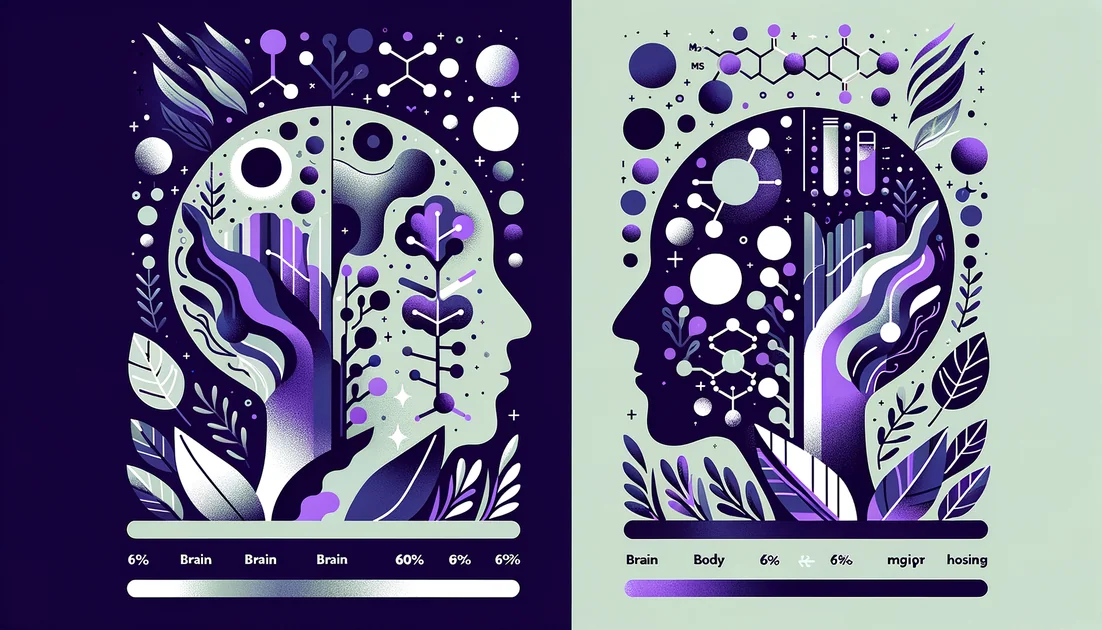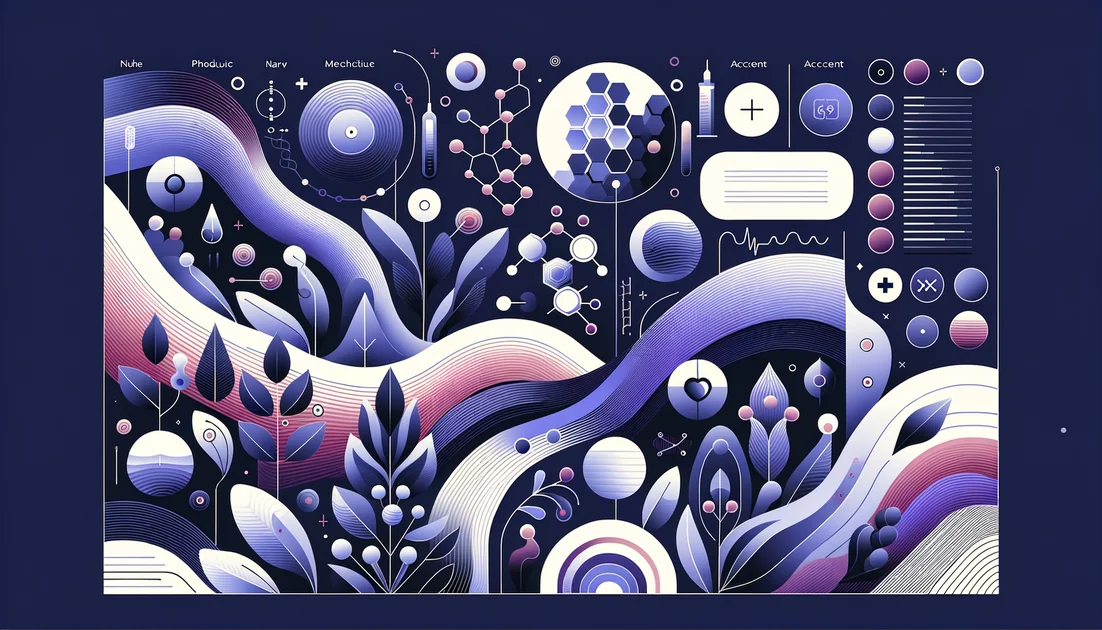
Magnesium Threonate vs Magnesium Glycinate (brain vs body optimization)
For brain-first goals (executive function, sleep architecture), choose Magnesium L-Threonate. For body-first goals (raising magnesium, muscle/nerve support) with good GI tolerance and value, choose Magnesium Glycinate. [2][4][1]
Magnesium L-Threonate has the best human signal for brain outcomes (small RCTs; executive function and sleep metrics) but supplies little elemental Mg and costs more. Magnesium Glycinate is the pragmatic pick for systemic magnesium optimization with solid tolerability and value. Many readers may combine: glycinate for daily repletion plus an evening split dose of threonate when targeting cognition/sleep—while staying within total Mg safety limits and medication timing rules. [2][4][6][8][1]
The Comparison
AMagnesium L-Threonate (Magtein)
by Often sold as Magtein (patented)
Standardization: Typically 2,000 mg Magtein per day ≈ 144 mg elemental Mg
Dosage: 1,500–2,000 mg/day Magtein (≈ 110–144 mg elemental Mg) split doses
Benefits
- •Brain-focused: human RCTs show benefits on executive function in older adults with cognitive complaints
- •Sleep support in recent RCT (objective metrics via wearable)
- •Preclinical evidence for raising brain Mg and synaptic plasticity
Drawbacks
- •Low elemental Mg per dose—poor choice for correcting systemic deficiency
- •Costly per effective dose
- •Evidence base is small and often industry-funded
Safety:Generally well tolerated in trials; start lower if sensitive to headaches/drowsiness; follow drug-spacing guidance for Mg supplements [1].
Standardization: Chelated to glycine; some products are "buffered" with Mg oxide—check labels
Dosage: 200–400 mg/day elemental Mg (often divided)
Benefits
- •Systemic repletion: delivers higher elemental Mg per serving
- •Generally gentler on GI than many salts; good for long-term use
- •Broad clinical use across Mg trials typically at 300–400 mg/day
Drawbacks
- •No brain-specific human evidence vs threonate
- •Buffered versions may reduce tolerability/bioavailability
- •Still can cause GI upset at high doses or in renal impairment
Safety:Space from interacting meds (antibiotics, bisphosphonates); caution in kidney disease; heed upper limits for supplemental Mg [1].
Head-to-Head Analysis
Efficacy for cognitive outcomes (executive function, memory) Critical
Winner:Magnesium L-Threonate (Magtein)• Importance: high
Sleep quality/architecture
Winner:Magnesium L-Threonate (Magtein)• Importance: medium
A 2024–2025 RCT found Mg-threonate improved deep/REM sleep and daytime functioning vs placebo; glycinate has only general magnesium/sleep claims without glycinate-specific RCTs. [4]
Systemic magnesium repletion (body optimization) Critical
Winner:Magnesium Glycinate (bisglycinate/diglycinate)• Importance: high
GI tolerability
Winner:Magnesium Glycinate (bisglycinate/diglycinate)• Importance: medium
Bioavailability to the brain Critical
Winner:Magnesium L-Threonate (Magtein)• Importance: high
Standardization/consistency
Winner:Magnesium L-Threonate (Magtein)• Importance: medium
Threonate is commonly sold as the patented Magtein with consistent labeling (2 g→~144 mg Mg); glycinate quality varies and may be "buffered" with Mg oxide unless specified. [8]
Cost/value per effective dose
Winner:Magnesium Glycinate (bisglycinate/diglycinate)• Importance: medium
Per serving and per mg elemental Mg, glycinate is substantially cheaper; threonate products cost more and supply less elemental Mg. [10]
Availability and stacking flexibility
Winner:Magnesium Glycinate (bisglycinate/diglycinate)• Importance: low
Glycinate is widely available from many brands and easy to combine for total elemental Mg targets; threonate options are fewer and pricier. [10]
Common Questions
Can I take both threonate and glycinate?
Yes—if you mind total elemental Mg and drug timing. Many use glycinate for repletion and add threonate in the evening for brain/sleep goals. Stay within safety limits. [1][8]
Does threonate really cross the blood–brain barrier better?
Animal and mechanistic data support brain Mg elevation, and small human RCTs show cognitive/sleep effects; direct BBB imaging in humans is lacking. [5][2][4]
What dose should I start with?
Threonate: ~1.5–2.0 g/day Magtein split; Glycinate: 200–400 mg/day elemental Mg. Start low and titrate based on tolerance. [9][6]
Which is better for sensitive stomachs?
Glycinate is typically gentler than many salts at repletion doses; any form can cause diarrhea if you overshoot. [7]
Which Should You Choose?
Executive function and working memory in mid- to late-life
Choose:Magnesium L-Threonate (Magtein)
MMFS-01 RCT improved composite cognition and executive function vs placebo; consider split dosing (AM/PM). [2]
Improving sleep depth/next-day functioning
Choose:Magnesium L-Threonate (Magtein)
21-day RCT showed gains in deep/REM sleep and readiness vs placebo; take part of dose 1–2 h before bed. [4]
Correcting low magnesium, muscle/nerve support, cramps
Choose:Magnesium Glycinate (bisglycinate/diglycinate)
Higher elemental Mg at tolerable doses and favorable absorption make glycinate the efficient repletion choice. [6]
Sensitive stomach or history of laxative effects
Choose:Magnesium Glycinate (bisglycinate/diglycinate)
Chelated glycinate is generally gentler than many salts at repletion doses. [7]
Budget-conscious daily supplementer
Choose:Magnesium Glycinate (bisglycinate/diglycinate)
Lower cost per effective elemental Mg and broad availability. [10]
Stacking with other sleep/calm supports (e.g., theanine)
You might also like
Explore more of our evidence-led investigations, comparisons, and guides across every article style.

Bluebonnet Nutrition (supplements)
The Paradox of Bluebonnet Nutrition: Certification Powerhouse, Modest Innovation, Limited Public COAs

Tongkat Ali (Eurycoma longifolia) vs Fadogia agrestis
Pick Tongkat Ali if you want an option with human trials, defined dosing, and standardized extracts. Skip Fadogia agrestis for now—there are no human trials and animal toxicity signals raise caution. [1][2][3][5][12][13]


Cordyceps
On a wind-scoured slope of the Tibetan Plateau, a herder kneels, prying from the soil a mummified caterpillar crowned by a thin brown stalk. This bizarre parasite—yartsa gunbu—once bankrolled villages and dazzled dinner parties in Beijing. Today, it sits in gym bags and research labs, promising stamina and resilience. But what does this shape-shifting story really add up to?

Alpha GPC + Uridine: Can This Duo Build Better Synapses?
The duo is a plausible dual-pathway stack (choline + uridine) with animal and mechanistic support; direct Alpha GPC + UMP human data are lacking, so synergy is theoretical, not proven.

Tocotrienols
The stealthier cousins of vitamin E—built with springy tails that move differently in cell membranes and behave differently in your body.


